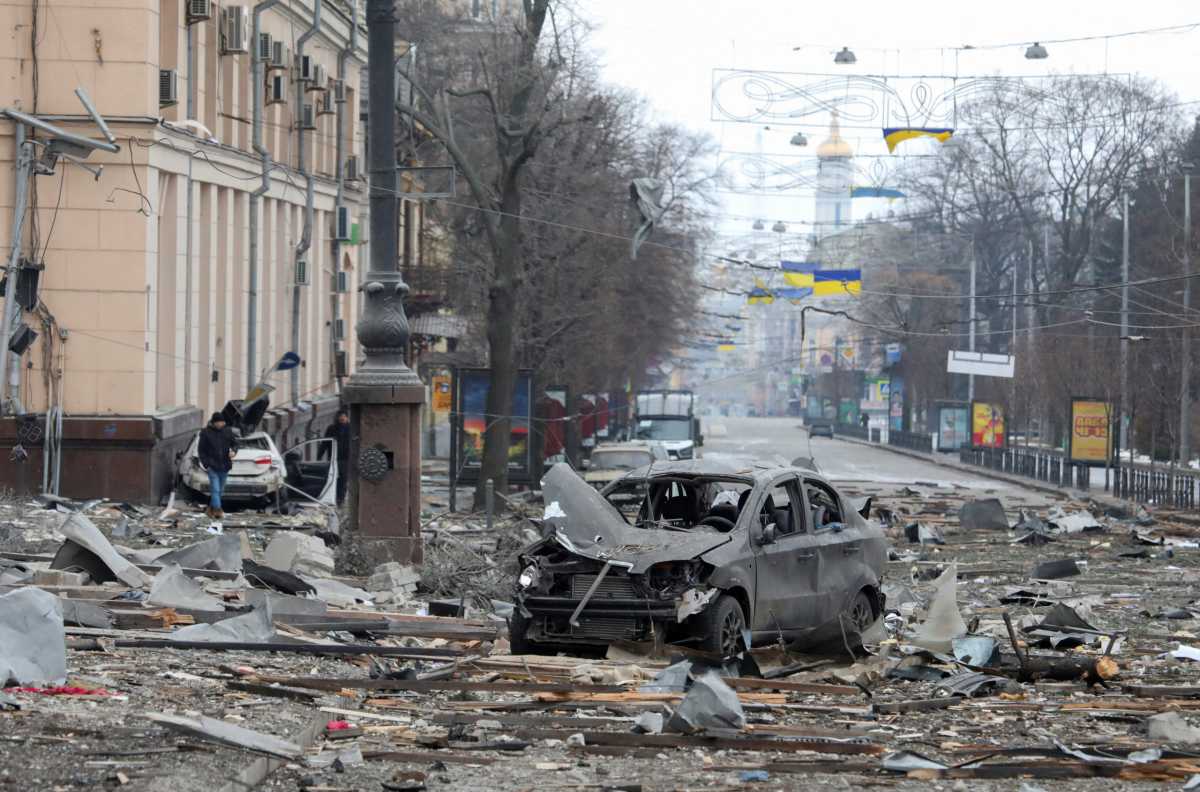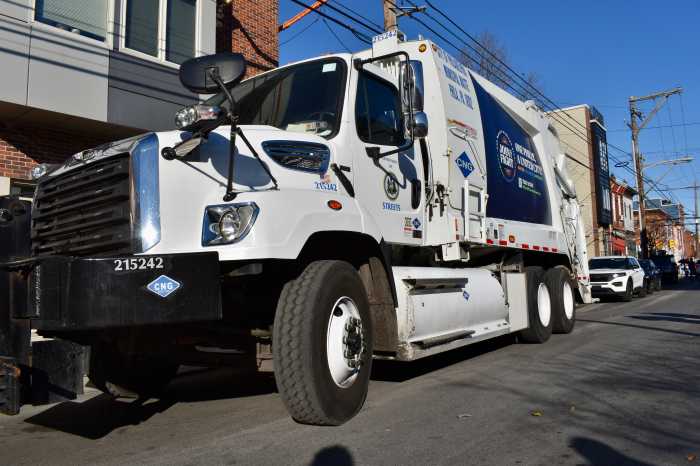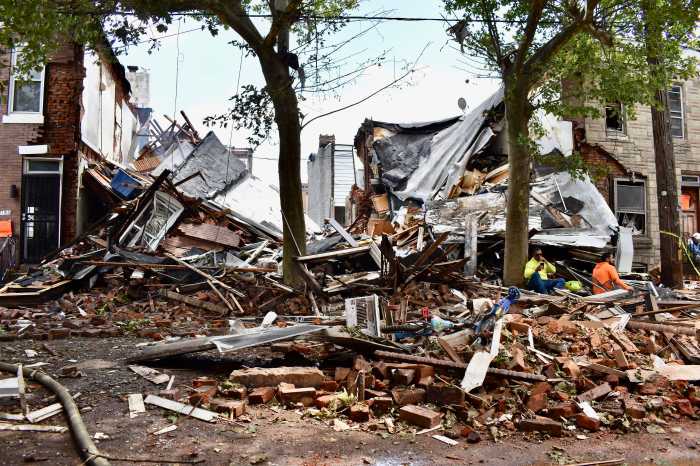By Aleksandar Vasovic
Russia bombed a TV tower in Ukraine’s capital on Tuesday and rained rockets on the city of Kharkiv as Moscow intensified its bombardment of Ukrainian urban areas in a shift of tactics after its six-day invasion stalled.
A U.S. official said a miles-long armored column bearing down on the capital Kyiv had not made any advances in the past 24 hours, frozen in place by logistics problems, short on fuel and food, and perhaps pausing to reassess tactics.
Russia’s defense ministry urged Kyiv residents to flee and said it would strike unspecified areas used by Ukraine’s security services and communications.
Speaking in a heavily guarded government compound in Kyiv, Ukrainian President Volodymyr Zelenskiy said Russia must “first stop bombing people” before peace talks could make any headway.
In a joint interview with Reuters and CNN, Zelenskiy also urged NATO members to impose a no-fly zone to stop Russia’s airforce, something the military alliance has ruled out.
As Zelenskiy, unshaven and wearing simple khaki clothes, spoke, news came that a Russian missile had struck a TV tower near the Babyn Yar Holocaust memorial site in Kyiv, killing at least five people.
Zelenskiy, who also spoke by phone for 30 minutes with U.S. President Joe Biden on Tuesday, said the artillery barrages on the eastern city of Kharkiv amounted to “state terrorism”.
President Vladimir Putin has drawn global condemnation and sanctions that have already sent the rouble into freefall and forced Russians to queue outside banks for their savings.
The West has imposed heavy sanctions on Russia to shut off its economy from the global financial system, pushing international companies to halt sales, cut ties, and dump tens of billions of dollars’ worth of investments.
But nearly a week since Russian troops poured over the border, they have not captured a single major Ukrainian city after running into far fiercer resistance than they expected.
“Looking at the Russian operation so far, they’re having tremendous problems with logistics and communications. The whole effort seems shambolic,” Michael Kofman, an expert on the Russian military at Washington’s Wilson Center, wrote in a tweet.
Many Western military analysts fear that Russia will now fall back on tactics which call for crushing bombardment of built-up areas before trying to enter them.
The Russians have been surprised not only by the scale of Ukrainian resistance but also by poor morale among their own forces, some of whom surrendered without a fight, the official said, without providing evidence.
Russia still has more forces to throw into the fight, though.
Russia’s Defense Minister Sergei Shoigu said the “special military operation” would continue until it had achieved its goals, defined by Putin as disarming Ukraine and capturing the “neo-Nazis” he says are running the country.
Rocket strikes on Tuesday in Kharkiv, Ukraine’s second biggest city, killed at least 10 people and wounded 35, Ukrainian Interior Ministry adviser Anton Herashchenko said.
Human rights groups and Ukraine’s ambassador to the United States have accused Russia of using cluster bombs and vacuum bombs, weapons condemned by many organizations. Moscow denies targeting civilians.
Munitions experts who reviewed footage on social media of attacks on Monday said Kharkiv appeared to have been targeted by cluster bombs.
High-rise buildings, schools, and kindergartens were among the buildings destroyed in those strikes, Interfax Ukraine reported, citing Ukraine’s defense ministry.
Zelenskiy said Kyiv remained the main target. Some Kyiv residents have been sheltering in underground metro stations at night, there are long lines for fuel, and some products are running out in shops.
More than 660,000 people, mostly women and children, have fled Ukraine to neighboring countries such as Poland and Romania since the invasion began, the U.N. refugee agency said.
At the Hungarian border crossing Tiszabecs, a mother cradled a baby in her arms after a four-day drive from Kyiv.
“I saw war, I saw rockets,” said her older son Ivan, 15, who looked exhausted after the journey. His father had stayed behind to fight.
Reuters

































